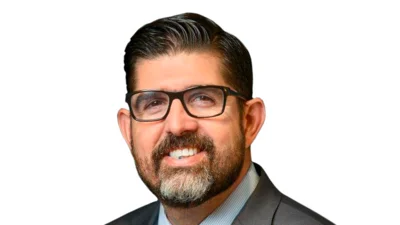University of Florida Health issued the following announcement on Sept. 7.
When a patient suffers a stroke, oxygen-starved brain cells begin dying within minutes. In these crucial moments, the brain produces a vital catalyst to protect itself and aid in recovery.
That catalyst — an enzyme known as neurolysin — activates a cascade of chemical messengers that reduce cell damage, swelling and inflammation in the brain. Now, a University of Florida Health researcher and his collaborators at Texas Tech University and other universities have discovered two compounds that appear to make the brain-protecting enzyme even more effective.
The discovery is an important, early step in developing new drugs to treat strokes and other neurological disorders, said David A. Ostrov, Ph.D., an associate professor in the UF College of Medicine’s department of pathology, immunology and laboratory medicine.
“We now have a toehold on a way to enhance the activity of neurolysin,” Ostrov said. “It’s an important step in a broader drug-development strategy.”
Ostrov said he was contacted by Vardan T. Karamyan, Pharm.D., Ph.D., the study’s lead researcher and professor of pharmaceutical sciences at Texas Tech University Health Sciences Center, because of his expertise with an enzyme similar to neurolysin.
During the research, Ostrov made use of UF’s HiPerGator, the fastest artificial intelligence supercomputer in higher education. It was deployed to screen nearly 140,000 drug compounds that could potentially make neurolysin more effective. HiPerGator completed the massive drug screening in about 15 hours — a task that would have taken more than six weeks of around-the-clock processing on a desktop computer.
From that massive collection of drug candidates, the researchers discovered two molecules (histidine-tyrosine and histidine-histidine) that selectively enhance the activity of neurolysin. To establish their findings, the effect of the top-ranked 40 compounds were tested on neurolysin obtained from rat models.
Those newly identified molecules, in turn, will play a key role in the further study of neurolysin and could become the lead structures for a new class of drugs to aid stroke patients, the researchers said. The findings were published recently in The Journal of Pharmacology and Experimental Therapeutics.
Ostrov said the discovery is also encouraging because it goes beyond advancing future stoke therapies. The same compounds also have the potential to help nerve injuries, seizures and neurological disorders, he said.
For Ostrov, the latest findings are a continuation of his work with a cellular receptor known as angiotensin-converting enzyme-2, or ACE-2. Previously, ACE-2 was targeted to identify drug candidates that help lower blood pressure by relaxing blood vessels. More recently, Ostrov has studied ACE-2 as a way to block transmission of the virus that causes COVID-19. Neurolysin is similar to ACE-2 in several respects.
Next, the researchers will likely try to slightly modify the two newly discovered compounds and then begin testing their effectiveness on neurolysin. Human clinical trials could begin in the near future, Ostrov said.
Research funding was provided by the National Institutes of Health and the TTUHSC School of Pharmacy.
Original source can be found here.



 Alerts Sign-up
Alerts Sign-up